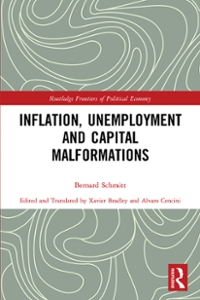Solve the following questions
Problem 2.4: Place each of the following transactions in one of the four components of expenditures: consumption, investment, government purchases, and net exports. 4a. Boeing sells an airplane to the Air Force. 4b. Boeing sells an airplane to American Airlines. 4c. Boeing sells an airplane to Air France. 4d. Boeing sells an airline to a private person. 4e. Boeing builds an airplane to be sold next year. Problem 2.6: Consider an economy that produces and consumes bread and automobiles. In the following table are data for two different years: Year 2000 2010 Price of an automobile USD 50,000 USD 60,000 Price of a loaf of bread USD 10 USD 20 Number of automobiles produced 100 120 Number of loaves of bread produced |500,000 loaves 400,000 loaves Problem 2.7: Abby consumes only apples. In year 1, red apples cost one dollar each, green apples cost two dollars each, and Abby buys 10 red apples. In year 2, red apples cost two dollars, green apples cost one dollar, and Abby buys 10 green apples. 2.7a. Compute a consumer price index for apples for each year. Assume that year 1 is the base year in which the consumer basket is fixed. How does your index change from year 1 to year 2? 2.7b. Compute Abby's nominal spending on apples in each year. How does it change from year 1 to year 2? 2.7c. Using year 1 as the base year, compute Abby's real spending on apples in each year. How does it change from year 1 to year 2? 2.7d. Defining the implicit price deflator as nominal spending divided by real spending. compute the deflator for each year. How does the deflator change from year 1 to year 2? 2.7e. Suppose that Abby is equally happy eating red or green apples. How much has the true cost of living increased for Abby? Compare this answer to your answers to parts (a) and (d). What does this example tell you about Laspeyres and Paasche price indices?Problem 2.3: Consider how each of the following events is likely to amt real GDP. Do you thin]: the change in real GDP reects a similar change in economic wellbeing? 2.3a. A hurricane in Florida forces Disney World to shut down for a month. 2.3h. The discovery of a new. easytogrow strain of wheat increases farm harvests" 1315. increased hostility between unions and management sparks a rash of strikes. 2.311 Firms throughout the economy experience falling demand1 causing them to lay off workers. 2.3e. Congress passes new environmental laws that prohibit nns from using production methods that emit large quanties of pollution. 2.31: More highschool students drop out of school to take jobs mowing lawns. 2.3g. Falhers arotmd the country reduce their work-weeks to spend more time with their children Problem 3.]: Use the neoclassical theoryr of distribution to predict the impact on the real wage and the real rental price of capital of each of the following events: A. A wave ofimmigration increases the labor force. B. An earthquake destroys some of the capital stock. C. A. technological advance improves the production mction. Problem 3.2: If a lDpercent increase in both capital and labor causes output to increase by less than ll} percent. the production function is said to exhibit decreasing returns to scale. If it causes output to increase by more than 1'3 percent, the production mction is said to exhibit increasing rehnns to scale. Why might a production mction exhibit increasing or decreasing returns to scale? Problem 3.3: Suppose that an economy's production Jiilnction is Cobb-Douglas with parameter alpha=.3. One way to solve B.D., assume numerical vahies, e.g.: Assume A=1, K=l, 1.11:} and Ll=I.l. 3.3:... What fractions of income do capital and labor receive? 3.33. Suppose that immigration raises the labor force by It] percent. What happens to total output (in percent]? The rental price of capital? The real wage? One way to solve 3.. assume A=1,K=I, Ltl=l and Ll=l.l. 3.3L\". Suppose that a ' of capital from abroad raises the capital stock by It] percent. What happens to total output [in percent}? The rental price of capital? The real wage? 3.3!}. Suppose that a technological advance raises the value of the parameter A by It] percent. What happens to total output {in percent]? The rental price of capital? The real wage? Problem 3.4.: Empirically the trend in the real wage closely tracks the trend in labor productivity. Explain why\









